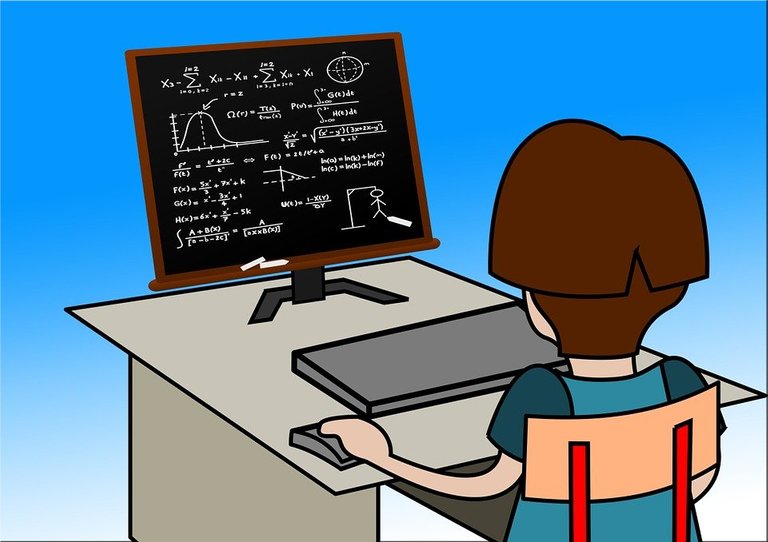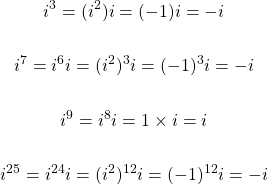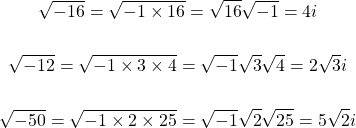Algebra With Complex Numbers
Hello everyone. In this mathematics post, I focus on algebra with complex numbers. This topic is suitable for upper high school students or early university mathematics students.
Complex numbers do seem strange at first but it does applications in electrical engineering, number theory and geometry.
It is assumed that the reader is familiar with the number system up to the real numbers and the algebraic concepts of the distributive law, factoring, exponents and the quadratic formula.
Math text rendered with QuickLatex.com.
References:
- https://www.mathsisfun.com/numbers/complex-numbers.html
- https://www.purplemath.com/modules/complex.htm

Topics
- The Imaginary Number i & Complex Numbers
- Algebra Examples With Complex Numbers
The Imaginary Number i & Complex Numbers
In the real numbers we are not able to take the square root of a negative number. Under the complex number system we can take the square root of negative numbers. The square root of negative 1 is an imaginary number called i.

with  .
.
The complex numbers is the next class of numbers above the real numbers. All real numbers are a part of the complex numbers. These numbers are a bit abstract in nature as they are not as simple as the numbers 1, 2, 3.5 and so on.
A complex number has a real number part a and an imaginary part b The complex number form is as follows.

Purely Real Numbers
A number is considered purely real if b = 0. There is no complex part in the number. Examples include the numbers 7, 8, 3.14, 9.8.
Purely Imaginary Numbers
Numbers are considered purely imaginary if b is non zero and a is zero. Examples include 6i, -10i and so on.

Algebra Examples With Complex Numbers
When it comes to the algebra with complex numbers, just remember that $i^2 = -1$. Watch for negative signs!
Imaginary Numbers With Exponents

In summary, i to the power of a multiple of 4 results in a positive 1.
What if the exponent is not a power of 4 nor an even exponent? You would to use some exponent power laws to help with simplifying.

Simplifying Negative Square Roots
Recall that  . With this in mind we can simplifying larger square roots with a negative inside when possible. In these exercises, the negative one is taken out as a factor as well as considering perfect square factors. Perfect square factors include 4, 9, 16, 25, 36, 49, 64, etc.
. With this in mind we can simplifying larger square roots with a negative inside when possible. In these exercises, the negative one is taken out as a factor as well as considering perfect square factors. Perfect square factors include 4, 9, 16, 25, 36, 49, 64, etc.

Distributive Law Cases
The distributive law with complex numbers is not too difficult. Just be careful with negatives and with using exponent laws.

Multiplying Binomials With Complex Numbers
The extension of the distributive law is multiplying binomials.

Complex Numbers In Fractions
Distributive law cases and multiplying binomials can also be found in fractions. Be very careful with fraction cases involving complex numbers and a bunch of negatives.
Example One

Square roots in the denominator are not preferred. We do a technique called rationalizing the denominator. The conjugate of 9 + 3i is 9 -3i. Multiply the top and bottom by this conjugate (multiply by 1).

Then multiply the binomials together on the top and bottom.

Example Two

To remove the i on the bottom, multiply top and bottom with the conjugate of 6i + 2. In this case, the conjugate of 6i + 2 is 6i - 2.

An optional step is to factor out a negative two on the top and simplify the fraction.

In a future post I will feature solving quadratic equations with complex numbers.
Posted with STEMGeeks
It would fun to expound on that on a future post if you have the time.
!discovery 37
A future post could include complex numbers applications and Fourier transforms. I do not know much about electrical engineering, number theory nor geometry in depth versus math for finance, probability and statistics.
It has been a while since I have looked at complex analysis mathematics or Fourier transforms from Partial Differential Equations. If I have the time and motivation, maybe.
This post was shared and voted inside the discord by the curators team of discovery-it
Join our community! hive-193212
Discovery-it is also a Witness, vote for us here
Delegate to us for passive income. Check our 80% fee-back Program